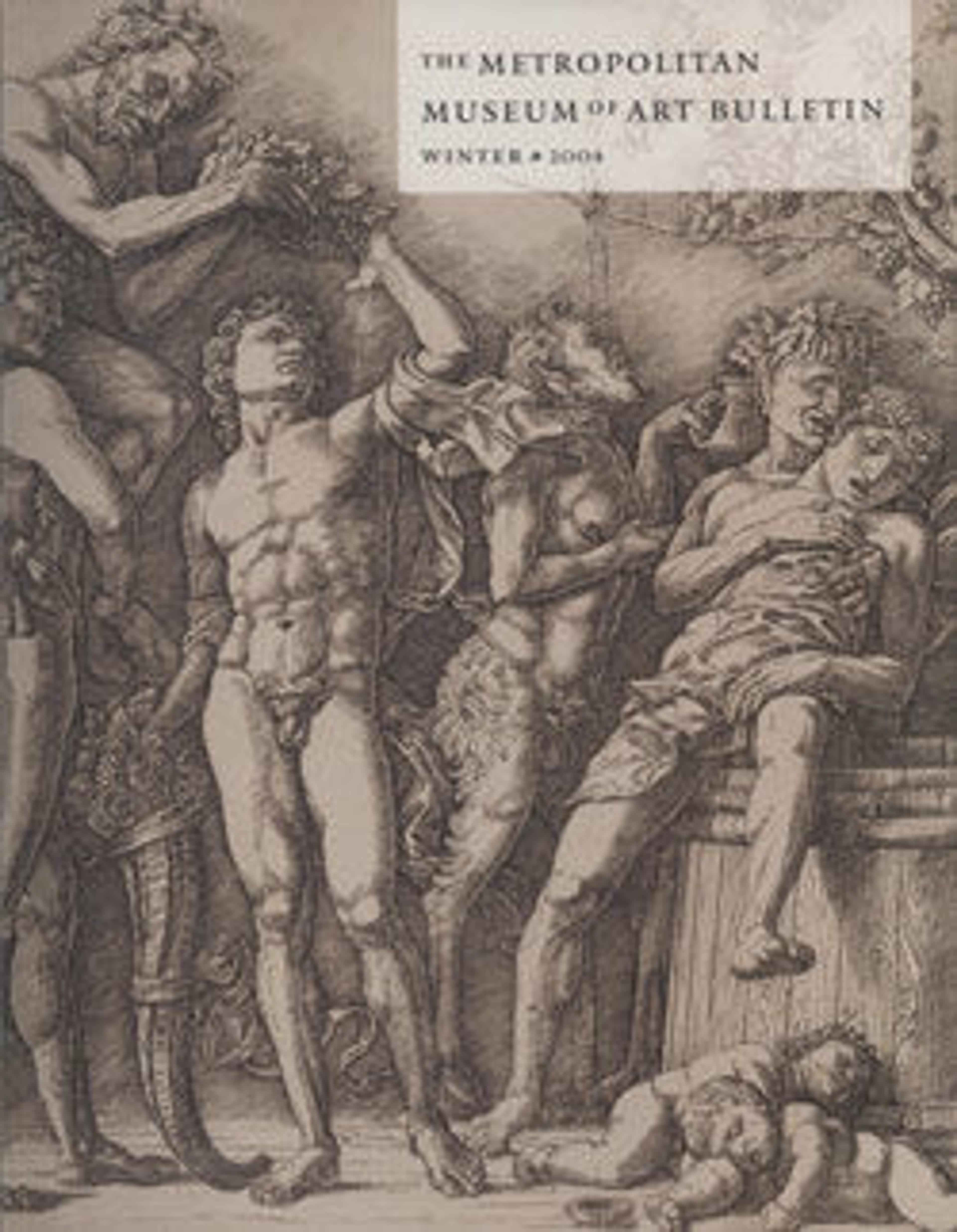Rape of Persephone with Pluto on horseback at right
Smitten by love for Proserpina, Pluto (also known as Hades), lord of the Underworld, carried her off violently in his infernal chariot, plunging through the Bay of Cyane into his subterranean realm. Scolari, who was also a painter, is best known today for his technically inventive and highly expressive woodcuts, which he both designed and cut. In his only depiction of a mythological subject, the artist captures the moment when the earth splits open, the waters of the bay pour into the void, and the fires of Hades issue forth, while the maiden struggles to free herself from her captor.
This print is from a scrapbook (album) containing woodcuts and chiaroscuro prints. It was presumably taken apart when it was acquired by The Met in 1922. On the front page of the volume there appeared a statement that this collection was made by the poet Samuel Rogers (1763-1855) and then bought by Angela Coutts (1816-1906) in memory of him at the sale of the collection at his house (28 April – 20 May, 1856). #1615a Rogers Sale. #146 Burdett Coutts Sale (Sotheby’s, May 1922). The prints from the original album have the range 22.73.3-1–22.73.3-161.
This print is from a scrapbook (album) containing woodcuts and chiaroscuro prints. It was presumably taken apart when it was acquired by The Met in 1922. On the front page of the volume there appeared a statement that this collection was made by the poet Samuel Rogers (1763-1855) and then bought by Angela Coutts (1816-1906) in memory of him at the sale of the collection at his house (28 April – 20 May, 1856). #1615a Rogers Sale. #146 Burdett Coutts Sale (Sotheby’s, May 1922). The prints from the original album have the range 22.73.3-1–22.73.3-161.
Artwork Details
- Title:Rape of Persephone with Pluto on horseback at right
- Artist:Giuseppe Scolari (Italian, active Venice, 1562–1607)
- Date:1590–1607
- Medium:Woodcut
- Dimensions:Sheet: 17 13/16 in. × 14 in. (45.3 × 35.5 cm)
- Classification:Prints
- Credit Line:Rogers Fund, 1922
- Object Number:22.73.3-152
- Curatorial Department: Drawings and Prints
More Artwork
Research Resources
The Met provides unparalleled resources for research and welcomes an international community of students and scholars. The Met's Open Access API is where creators and researchers can connect to the The Met collection. Open Access data and public domain images are available for unrestricted commercial and noncommercial use without permission or fee.
To request images under copyright and other restrictions, please use this Image Request form.
Feedback
We continue to research and examine historical and cultural context for objects in The Met collection. If you have comments or questions about this object record, please contact us using the form below. The Museum looks forward to receiving your comments.
